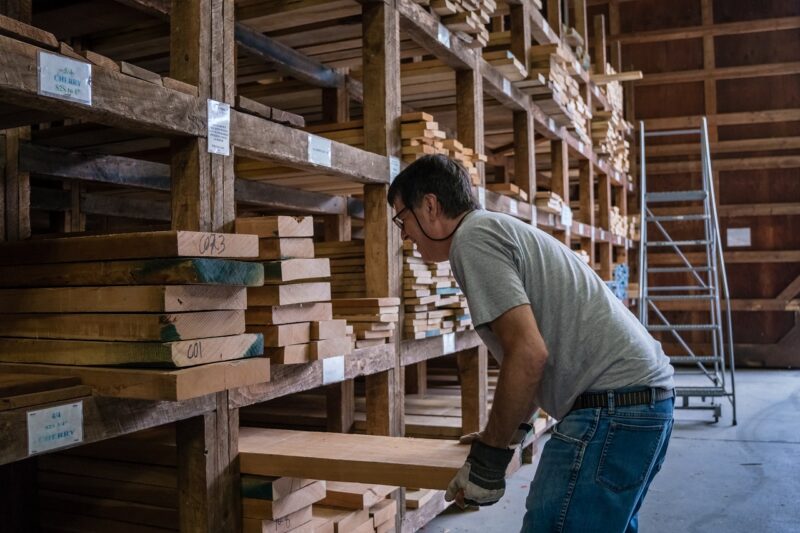Published: 23/04/25 By: Mike Bekin
The entire catalogue of timber can be separated into two categories: softwoods and hardwoods. These are two of the most commonly used terms you will hear when discussing timber choices, and knowing their differences can be pretty crucial when choosing your species. So, what are they?
To help you understand more, we have put together this guide looking at what you need to know about softwoods and hardwoods.
What is the Difference Between Softwood and Hardwood Timber?
Do not be fooled by their names; the difference between softwoods and hardwoods has nothing to do with their strength. Instead these two terms describe the types of trees from which the timber was sourced.
What You Need to Know About Softwood Timber
Softwoods come from coniferous trees, which are typically evergreen and have needles instead of broad leaves. These trees grow relatively quickly to produce timber which tends to be less dense than hardwood timber – though this certainly is not the case for every softwood species.
One of the main advantages of softwoods is that they tend to be lower priced than hardwoods. This can make them great budget-friendly choices for construction projects, as long as you know the properties of the species you are considering.
Some of the softwood timbers we frequently supply to our clients include:
These can be used for a wide range of projects, including decking, cladding, fencing and exterior furniture.
We also supply sustainably treated softwoods, bringing added durability and longevity to your timber construction project.
What You Need to Know About Hardwood Timber
Hardwoods, on the other hand, come from deciduous trees. These trees shed their leaves annually and grow more slowly than coniferous trees, creating typically denser timber.
While hardwoods can be more expensive than softwoods, their long lifespan and premium appearance can make them a worthwhile investment.
Some of the hardwood timbers we frequently supply to our clients include:
These timbers are commonly used for exterior projects, such as decking and cladding, as well as structural beams and marine applications. For instance, you will often see hardwoods used for marine fenders and groynes.
Which Should You Choose?
At EcoChoice, we never suggest basing your timber choice on whether it is a hardwood or a softwood. While hardwoods do tend to be more durable, this is not a timber-wide rule and has many exceptions. Western Red Cedar, for example, is a softwood which is more durable and stronger than many hardwoods.
Rather than using a hardwood or softwood categorisation to understand your timber, you should look instead at the timber species itself.
Find Your Timber Match at EcoChoice
At EcoChoice, we supply sustainable hardwoods and softwoods sourced from responsibly managed forests to our UK clients. Looking for your next batch of timber? Let us know what you need, and we will match you with the species which is right for the job.
